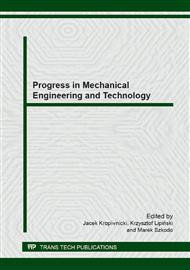p.9
p.15
p.21
p.29
p.37
p.45
p.51
p.63
p.77
Experimental Investigation of Parameters, Influencing Velocity Fields during Beer Fermentation
Abstract:
In the course of the research aiming on the optimisation of beer fermentation, a large number of fermentations have been performed under various boundary conditions. We carried out different measurements, including temperature and velocity investigations. Due to turbidity, the latter cannot be performed easily by using common techniques like laser Doppler anemometry or particle image velocimetry. Therefore the ultrasound Doppler velocimetry got utilised. It permits measurements in opaque fluids and provides velocity fields for any time during the fermentation.
Info:
Periodical:
Pages:
37-44
Citation:
Online since:
December 2013
Authors:
Keywords:
Price:
Сopyright:
© 2014 Trans Tech Publications Ltd. All Rights Reserved
Share:
Citation:


